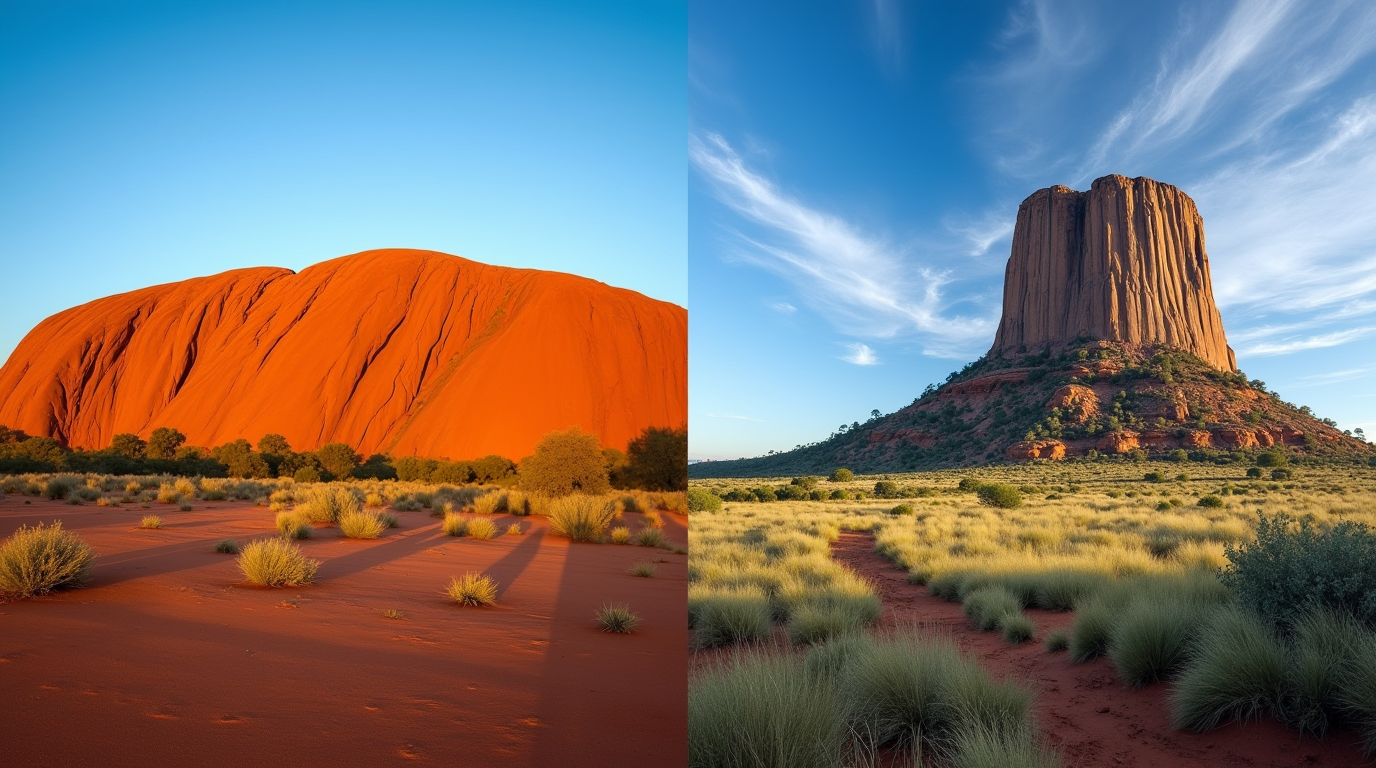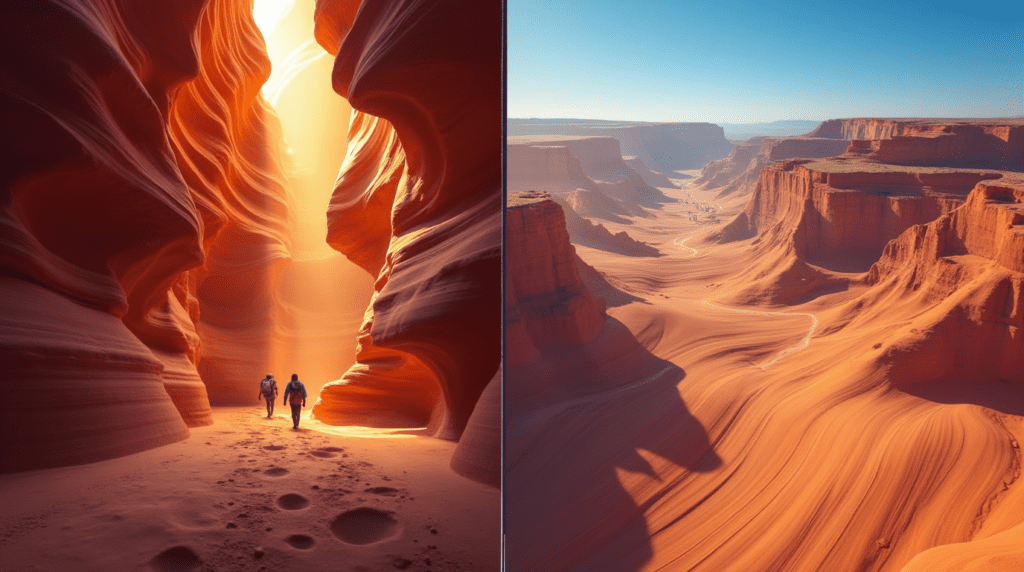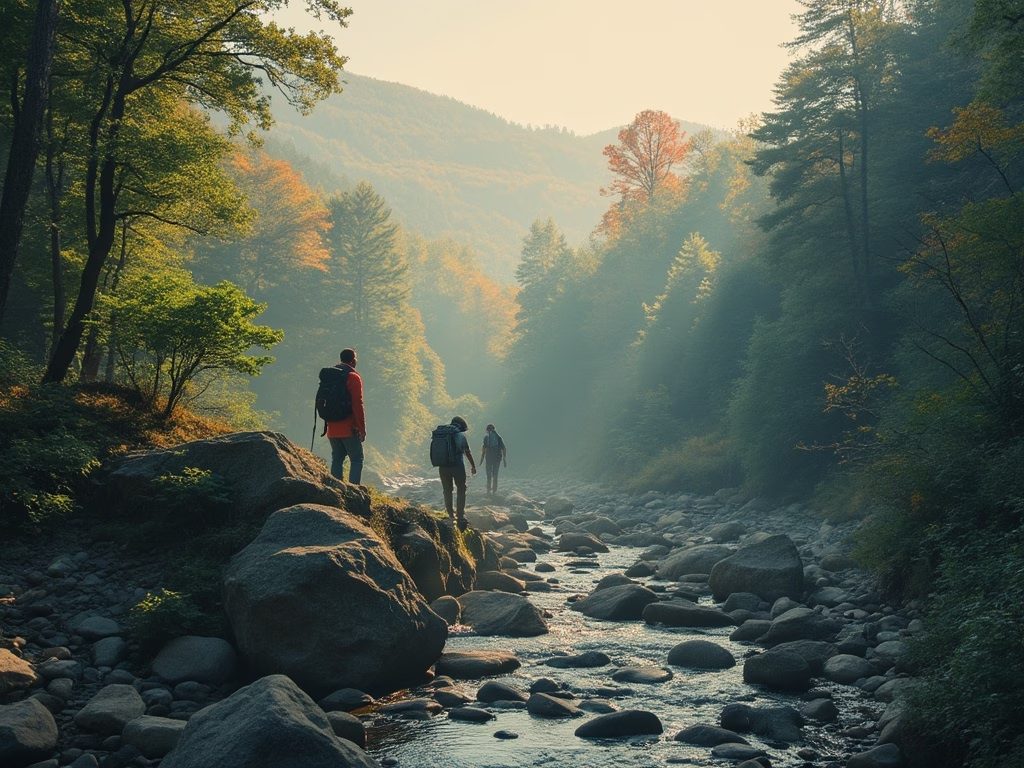Uluru vs. Devils Tower: Comparing Two Iconic Monoliths of the World
Discover the Majestic Monoliths of Uluru and Devils Tower. How does Ayers Rock compare to Devils Tower? This question often arises among travelers fascinated by natural wonders. And I have explored this!
The Earth is adorned with remarkable natural formations that captivate the imagination and inspire awe. Among these, monoliths—massive, singular rock formations—stand as testaments to the planet’s geological history and cultural richness. Two of the most iconic monoliths are Uluru (also known as Ayers Rock) in Australia and Devils Tower in the United States. Rising dramatically from their surrounding landscapes, these natural wonders draw visitors from around the globe.
This blog post aims to compare and contrast Uluru and Devils Tower, exploring their geological features, cultural significance, tourism opportunities, and conservation efforts. Despite being continents apart, these monoliths share intriguing similarities and stark differences that highlight the diversity of Earth’s natural heritage. But if you are not in the mood for serious reading, you could explore a guide on how to make coffee rafting the Grand Canyon or explore the routes from Dublin to Giant’s Causeway!
Geological Formation and Physical Characteristics
Uluru (Ayers Rock)
Formation and Composition
Uluru is a massive sandstone monolith located in the heart of Australia’s Red Centre, within the Uluru-Kata Tjuta National Park in the Northern Territory. Geologists estimate that Uluru formed over 550 million years ago. It is composed primarily of arkose sandstone, rich in feldspar minerals. The rock was originally part of an ancient seabed, uplifted and folded through tectonic movements, and then shaped by millions of years of erosion.
Physical Features
- Height: 348 meters (1,142 feet) above the desert plain.
- Circumference: Approximately 9.4 kilometers (5.8 miles).
- Unique Characteristics:
- Changes color depending on the time of day and weather conditions, glowing red at sunrise and sunset due to the iron content oxidizing.
- Features grooves, caves, and fissures formed by erosion.
Devils Tower
Formation and Composition
Located in northeastern Wyoming, Devils Tower is a striking geological feature that rises dramatically from the rolling prairies and pine forests of the region. Geologists believe that Devils Tower was formed about 50 million years ago during the Eocene epoch. It is composed of igneous rock called phonolite porphyry. The monolith is the result of magma pushing up into sedimentary rock layers and cooling underground, later exposed by erosion of the softer surrounding rock.
Physical Features
- Height: 386 meters (1,267 feet) from base to summit.
- Summit Plateau Elevation: About 1,558 meters (5,112 feet) above sea level.
- Unique Characteristics:
- Renowned for its columnar jointing, creating massive vertical grooves.
- Some of the largest and most well-defined natural columns in the world.
Comparative Analysis
Let’s look at the basic facts on How does Ayers Rock compare to Devils Tower.
- Geological Origins:
- Uluru: Sedimentary rock (sandstone) formed from ancient seabed deposits.
- Devils Tower: Igneous rock formed from cooled magma.
- Age Difference:
- Uluru: Over 550 million years old.
- Devils Tower: Approximately 50 million years old.
- Physical Appearance:
- Uluru: Smooth, rounded appearance with color-changing qualities.
- Devils Tower: Rugged, grooved columns with vertical striations.
- Commonality:
- Both rise prominently from flat terrains, creating iconic silhouettes.
Cultural and Spiritual Significance
Uluru
Indigenous Importance
Uluru holds profound spiritual significance for the Anangu people, the traditional custodians of the land. For thousands of years, it has been a sacred site central to their Tjukurpa (Dreamtime) stories, which are the foundation of Anangu culture, spirituality, and law. The rock and its features are associated with ancestral beings and creation myths.
Cultural Practices
- Ceremonies and Rituals: Conducted at specific sites around Uluru.
- Rock Art: Ancient paintings in caves provide insights into Anangu heritage.
- Climbing Ban: Climbing Uluru was officially banned in October 2019 out of respect for its cultural significance.
Devils Tower
Native American Significance
Devils Tower is sacred to several Native American tribes, including the Lakota, Cheyenne, Crow, and Kiowa. Known to them by various names, such as Bear Lodge and Bear’s Tipi, the monolith features prominently in their oral histories and spiritual practices.
Legends and Myths
- The Bear Legend: A tale of girls saved from giant bears by the Great Spirit, with the bears’ claws creating the tower’s grooves.
- Ceremonial Use: Site for prayer offerings, vision quests, and the Sun Dance.
Comparative Analysis
So How does Ayers Rock compare to Devils Tower on spiritual and culstural plains?
- Spiritual Importance: Both monoliths are deeply sacred to indigenous peoples.
- Cultural Preservation: Emphasis on respecting traditions and restricting certain activities.
- Storytelling: Rich mythologies enhance the cultural value of both sites.
Tourism, Accessibility, and Visitor Experience
Uluru
Tourism Opportunities
- Guided Base Walks: Led by Anangu guides sharing stories and knowledge.
- Sunrise and Sunset Viewing: Spectacular color displays draw photographers and nature lovers.
- Cultural Centers: The Uluru-Kata Tjuta Cultural Centre offers educational exhibits.
Accessibility
- Location: Uluru-Kata Tjuta National Park, Northern Territory, Australia.
- Transportation: Accessible via Ayers Rock Airport (Connellan Airport) with flights from major cities like Sydney and Melbourne.
- Accommodations: Ranging from camping sites to luxury resorts in nearby Yulara.
Visitor Guidelines
- Respect Sacred Sites: Adhere to signage and avoid restricted areas.
- Environmental Care: Stay on designated paths and dispose of waste properly.
- Photography Restrictions: Some areas prohibit photography to protect cultural privacy.
Devils Tower
Tourism Opportunities
- Hiking Trails: The Tower Trail offers a 2-kilometer (1.3-mile) loop around the base.
- Rock Climbing: Over 220 established climbing routes; climbers must register.
- Educational Programs: Ranger-led talks and evening presentations.
Accessibility
- Location: Devils Tower National Monument, Wyoming, USA.
- Transportation: Accessible by road; nearest airports are Rapid City Regional Airport and Casper/Natrona County International Airport.
- Accommodations: Campgrounds within the monument and lodging in nearby towns.
Visitor Guidelines
- Climbing Closures: Voluntary climbing closure in June for cultural respect.
- Stay on Trails: Protect vegetation and minimize erosion.
- Leave No Trace: Pack out all trash and respect wildlife habitats.
Comparative Analysis
- Tourist Attractions: Both sites offer natural beauty and cultural education.
- Cultural Sensitivity: Guidelines in place to ensure respectful visitation.
- Accessibility: Well-developed infrastructure supports tourism while aiming to preserve the environment.
Conservation Efforts and Environmental Challenges
Uluru
Conservation Initiatives
- Joint Management: Collaboration between Parks Australia and the Anangu people.
- Environmental Programs: Focus on invasive species control, fire management, and habitat protection.
- Sustainable Tourism: Efforts to reduce the ecological footprint of visitors.
Challenges
- Tourism Impact: Managing waste, erosion, and disturbances to wildlife.
- Climate Change: Addressing threats like increased temperatures and altered rainfall patterns.
Devils Tower
Conservation Initiatives
- National Monument Status: Protected since 1906 under the Antiquities Act.
- Cultural Resource Management: Ongoing dialogue with Native American tribes.
- Wildlife Protection: Safeguarding habitats for species like prairie dogs and raptors.
Challenges
- Climbing vs. Culture: Balancing recreational use with sacred significance.
- Environmental Degradation: Mitigating the effects of foot traffic and climbing equipment.
Comparative Analysis
And How does Ayers Rock compare to Devils Tower on environmental scale?
- Shared Goals: Preservation of natural and cultural resources.
- Collaborative Efforts: Working with indigenous communities is key.
- Education and Awareness: Informing visitors about their impact and responsibilities.
Conclusion
Summary of Key Points
Uluru and Devils Tower are extraordinary natural monuments that showcase the Earth’s geological diversity and the deep cultural connections humans have with the land. Their differences in geological formation—Uluru’s ancient sandstone versus Devils Tower’s igneous columns—highlight the variety of Earth’s processes. Both hold profound spiritual significance for indigenous peoples, underscoring the importance of cultural respect.
Global Significance of Monoliths
These monoliths are more than just stunning landscapes; they are symbols of heritage, spirituality, and the enduring relationship between nature and culture. They remind us of the planet’s history and the narratives that shape human experience.
Call to Action
When visiting such sacred sites, it’s crucial to engage responsibly:
- Respect Cultural Practices: Follow guidelines set by indigenous communities.
- Support Conservation Efforts: Participate in sustainable tourism.
- Educate Yourself and Others: Learn about the significance of these sites and share that knowledge.
Final Thoughts
Exploring Uluru and Devils Tower offers a unique opportunity to connect with the natural world and its rich tapestry of stories. Whether you’re drawn by their geological marvels or cultural depths, these monoliths provide an unforgettable journey into the heart of our planet’s wonders.



